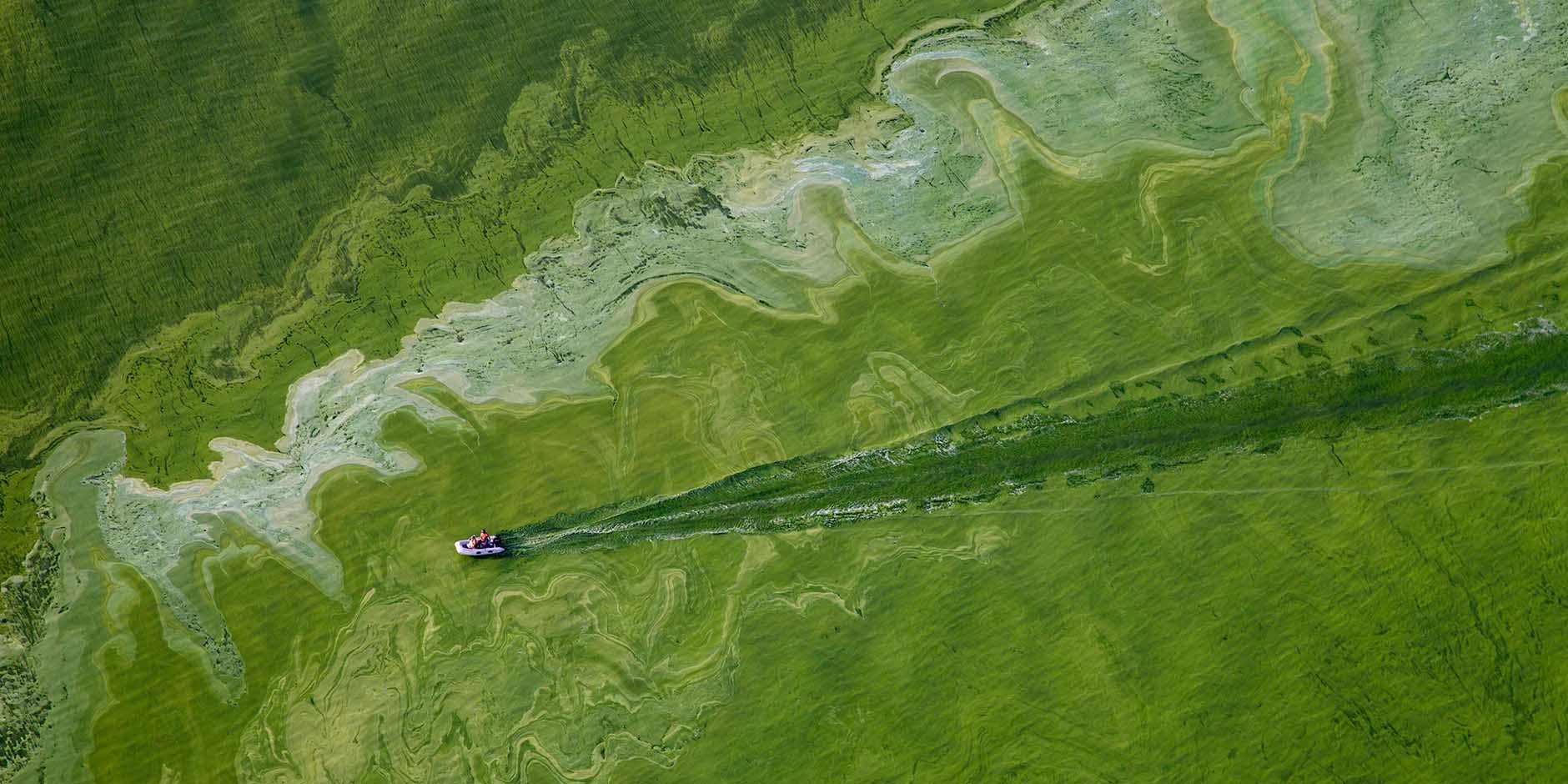In 2021 reports of potentially toxic algal blooms in bodies of water across the United States soared to at least 476, an 8% increase over the 439 outbreaks reported in the previous year. The reported increase in sightings was announced by the Environmental Working Group (EWG).
The EWG tracks news reports of algae outbreaks annually with their interactive map, including reports from 2010. Last year saw the second-highest number of outbreaks since the organisation started logging them, closely behind the record 539 algae bloom identified in 2019. Throughout 2021 41 states reported 476 algal blooms, with the top 6 states accounting for half of all reported outbreaks across the country.
According to news reports, Massachusetts had the highest number of algal blooms last year, with 54, followed by Florida, with 47. It’s worth remembering that states with fewer reports on record are still likely to have algal bloom problems, but some states monitor outbreaks much less, and their news media may be less interested in reporting on blooms, which affects the standings within this report.
Blue-green algae, which are tiny organisms called cyanobacteria, are known to produce toxins that are dangerous to human health. The algae can cause many short-term health problems, like vomiting, diarrhoea and sore throat, and longer-term issues like liver failure and cancer.
Exposure to these cyanotoxins usually occurs when in or near polluted bodies of water or by drinking contaminated water. There are thousands of cyanobacteria species, with only a select number of species producing toxins harmful to human health. Regular water testing is recommended to identify whether an algal bloom is toxic or not.
Harmful algal blooms are created by an influx of nitrogen and phosphorus within a water system, such as a lake or river. Sudden increases in these nutrients are often caused by agricultural pollution, like farm fertilisers or animal manure, running off the land and polluting the water. Warm temperatures and sunlight further trigger exponential algal growth, worsening the problem.
The primary algal bloom season in the United States typically occurs during the summer months; however, EWG has observed more outbreaks during autumn and winter in recent years. Experts think this may be due to the climate crisis as temperatures remain warmer for longer. In the coming years, higher temperatures and more frequent severe weather events will likely trigger more harmful algal blooms that are intense and longer lasting.
As agricultural pollution has been pinpointed as a leading driver of algal blooms, the government must work together with farmers to implement management that protects waterways from agricultural runoff at the source. Over time these practices would prevent nutrients from triggering algal blooms that cost time, money, and the environment. Regular water quality monitoring is also vital to identifying the signs of an algal bloom before it gets out of hand.
